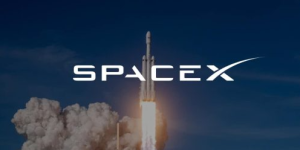
Introduction
SpaceX, founded by Elon Musk in 2002, has rapidly transformed from an ambitious startup into a global leader in aerospace innovation. With its bold mission to “make life multiplanetary,” SpaceX’s frequent launches have captivated the world and reshaped the future of space exploration. A SpaceX launch is no longer just a scientific event—it’s a global spectacle that symbolizes progress, ambition, and the dawn of a new space age.
In this article, we’ll take an in-depth look at what makes a SpaceX launch so significant, explore its technological breakthroughs, and examine how it’s changing space travel forever.
The History of SpaceX Launches
SpaceX’s journey began with the launch of Falcon 1 in 2006, which failed. But by 2008, Falcon 1 became the first privately developed liquid-fueled rocket to reach orbit. This achievement paved the way for Falcon 9, which would later become the backbone of the company’s launch operations.
One of the most iconic moments came in May 2020, when the Crew Dragon Demo-2 mission successfully launched NASA astronauts to the International Space Station (ISS)—the first time a private company achieved this feat.
Since then, SpaceX has carried out numerous manned and unmanned launches, making history time and again with rapid reusability, commercial satellite deployments, and groundbreaking missions like Inspiration4, the first all-civilian spaceflight.
Technological Innovations Behind a SpaceX Launch
What makes a SpaceX launch unique is the advanced technology that drives every mission. Some of the key innovations include:
1. Reusable Rockets
SpaceX’s Falcon 9 and Falcon Heavy rockets are designed to be reusable. Their first stages can land back on Earth—on solid ground or autonomous drone ships at sea—significantly reducing the cost of each launch.
2. Merlin Engines
The rockets use Merlin engines, which are highly efficient and capable of being restarted mid-flight, allowing complex orbital maneuvers and precise payload deployment.
3. Dragon Spacecraft
The Dragon spacecraft is used to transport cargo and crew to the ISS. With the Crew Dragon variant, SpaceX is leading NASA’s Commercial Crew Program, replacing reliance on Russian Soyuz spacecraft.
4. Starlink Integration
Many launches also carry Starlink satellites, which are part of SpaceX’s plan to provide global broadband internet. This dual-purpose launch strategy is efficient and cost-effective.
How a Typical SpaceX Launch Happens
A SpaceX launch involves precise planning, state-of-the-art technology, and global coordination. Here’s a simplified timeline of events:
Pre-Launch
- Payload integration and final inspections.
- Rollout of the rocket to the launch pad.
- Countdown rehearsals and fueling tests.
Launch Day
- Propellant loading (RP-1 and liquid oxygen) begins about 35 minutes before liftoff.
- At T-0, engines ignite and liftoff occurs.
Stage Separation
- About 2-3 minutes into the flight, the first stage separates and begins its return to Earth.
- The second stage continues carrying the payload to its designated orbit.
Landing
- The first stage performs a series of engine burns to slow down and land either on a drone ship or landing pad.
Deployment
- Satellites or cargo are deployed into orbit, completing the primary mission.
Key Launch Sites
SpaceX operates from several strategic locations to optimize mission flexibility:
- Cape Canaveral Space Force Station (CCSFS), Florida
- Kennedy Space Center (KSC), Florida
- Vandenberg Space Force Base, California
- Boca Chica (Starbase), Texas – primarily used for testing Starship, SpaceX’s next-generation rocket.
Each launch site supports different orbital inclinations and types of missions, from polar orbits to interplanetary travel.
The Role of Starship in Future Launches
SpaceX’s Starship system is set to revolutionize not just space launches, but interplanetary travel. Starship will be a fully reusable spacecraft capable of carrying up to 100 tons of cargo or 100 passengers, ideal for Moon and Mars missions.
In April 2023, SpaceX conducted a fully integrated Starship test flight, signaling a new chapter in spaceflight. The Starship Super Heavy booster provides unmatched lift capacity, making it the most powerful rocket ever built.
Once operational, Starship will serve as the backbone of NASA’s Artemis program, which aims to return humans to the Moon by the late 2020s.
Environmental and Economic Impact
Reducing Cost per Launch
Reusable rockets drastically lower launch costs. A traditional launch can cost hundreds of millions of dollars, while SpaceX’s reusable systems reduce costs to below $70 million per launch.
Environmental Considerations
While rocket launches do produce emissions, SpaceX is working to develop methane-fueled engines (Raptor engines) that are cleaner and can be sustainably produced from Mars’ atmosphere—critical for long-term space colonization.
Job Creation
With operations in several states and collaborations with NASA, SpaceX has created thousands of high-tech jobs and spurred local economies.
Commercial and Scientific Missions
SpaceX doesn’t just launch satellites—it launches dreams and data for governments, corporations, universities, and individuals. Notable missions include:
- Crewed NASA missions to the ISS
- Commercial satellite deployments (Starlink, SES, Iridium)
- Defense payloads for the U.S. Space Force
- Scientific missions for climate monitoring and deep space research
Private companies, research institutions, and space tourists alike rely on SpaceX launches for their ambitious ventures.
Public Interest and Global Impact
Every SpaceX launch is broadcast live, often garnering millions of views on YouTube and other platforms. The blend of cinematic staging, technical excellence, and human curiosity keeps audiences engaged.
Moreover, nations worldwide are now rethinking their space programs. From Europe to Asia, other space agencies are either partnering with SpaceX or accelerating their own innovation to remain competitive.
Conclusion
A SpaceX launch is more than just a rocket lifting off—it’s a symbol of human progress, technological innovation, and the boundless potential of space exploration. Through reusable rockets, visionary goals, and a commitment to affordability, SpaceX is democratizing access to space and laying the foundation for humanity’s future beyond Earth.